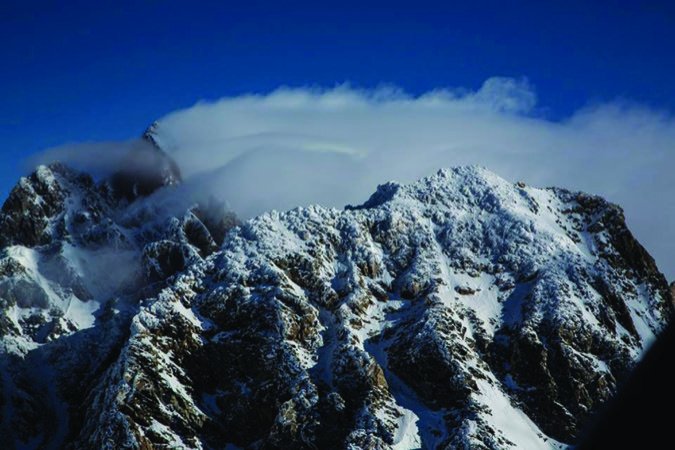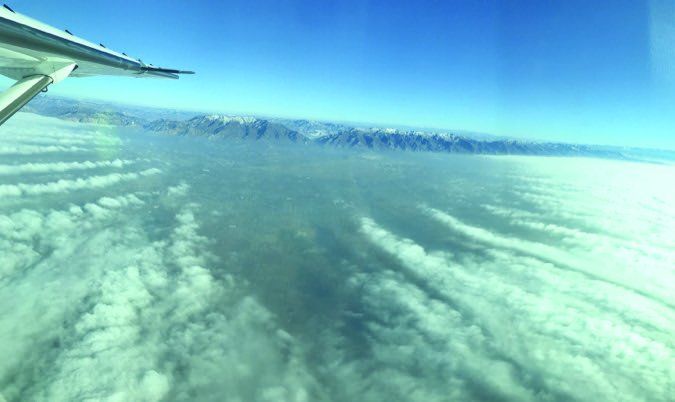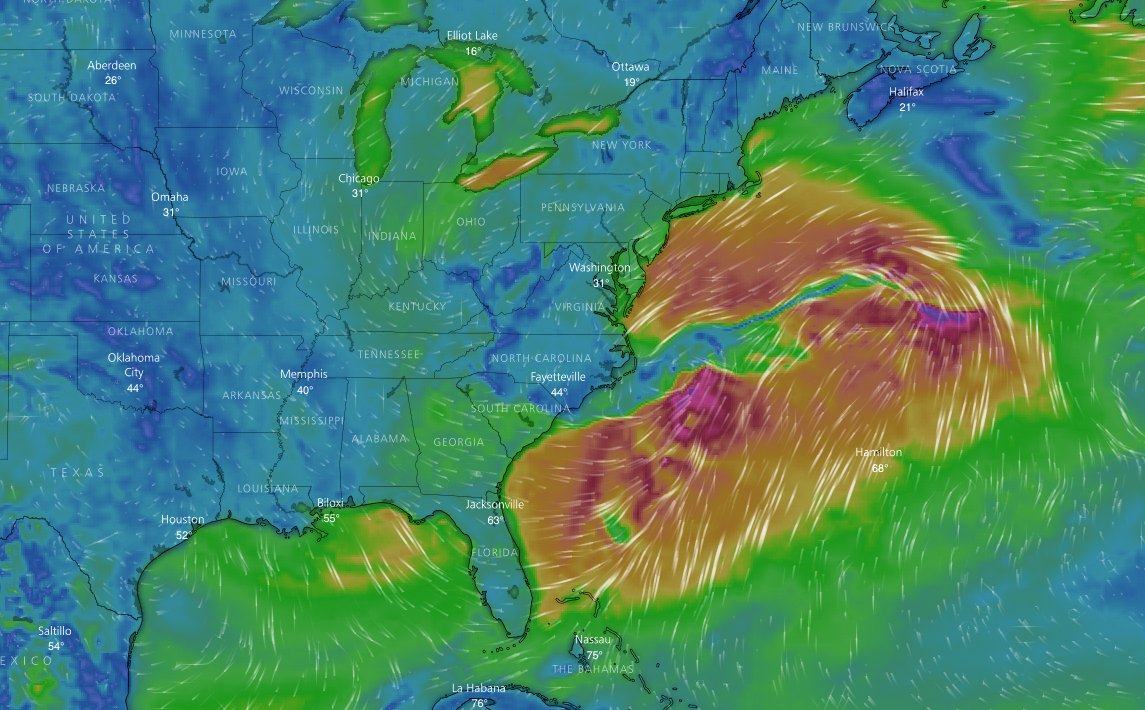Most pilots venture into windy conditions with enough skills and smarts to know how to either avoid or cope with them. But wind-related accidents are still commonplace, so clearly we don’t always get it right. One reason for this may be fairly simple: With the exception of blowing snow, tornadoes, dust devils and some cloud formations, wind is usually invisible. To visualize what is going on, you have to visualize wind currents, which is where my experience whitewater rafting has served me well.
I have found that the best way to avoid unpleasant surprises is to anticipate them. Wind socks and bent trees are great clues, but even without them it’s possible to know when and how an encounter with wind will affect your aircraft. To visualize what is going on, you need to have a bit of scientific understanding, a bit of imagination and the humility to accept when you need to run away.
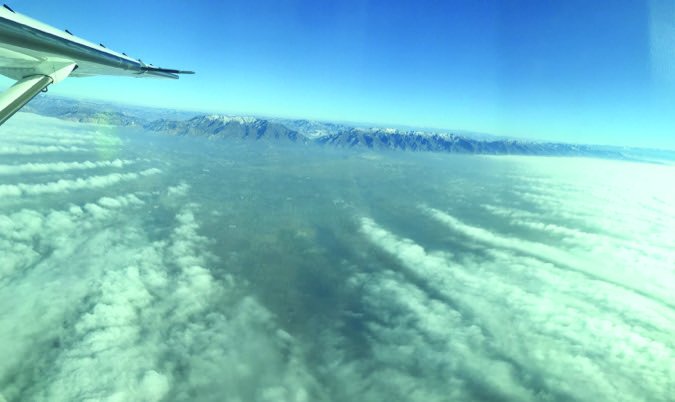
Laminar vs. Turbulent Flow
Unobstructed straight winds, more precisely known as laminar flow, shouldn’t be much of a problem for most pilots. Wind that flows in a constant stream is easy to visualize, especially when it causes the airplane’s tail to weathervane and the pilot knows that crabbing into the wind will counter the effect.
Turbulent flow is much more of a problem. When laminar flow interacts with ground features like buildings, rows of trees or—at a larger scale—features in terrain like ridges and canyons, the resulting turbulence can hold some nasty surprises. Turbulence and wind shear often catch pilots off-guard and can result in mishaps such as hard landings, ground loops, excursions off the runway or overstressed airframes.
When I fly, I translate my understanding of how water flows over rocks, funnels through gaps and pours over ledges into a mental visualization of the air flow, both laminar and turbulent. I try to visualize it as though it were visible, where it flows freely and where it flows over obstacles and terrain features. I don’t always get it right, but it usually helps me predict what the wind or thermals might be doing before I encounter the actual effect.
When I am near a ridge, I combine my knowledge of the winds aloft forecast and my understanding of the aspect of the slope of the terrain with respect to shade and sun. I try to anticipate where I will encounter the resulting updrafts and downdrafts, either from wind or from thermal activity. It’s nice to be able to give passengers a heads-up about when we might encounter turbulence, what form it might take and how long it might last. It’s even nicer when my understanding allows me to adjust my flight path to avoid the invisible obstacle altogether.
Turbulence and Rotors
Water and air are both fluids and follow very similar flow patterns. Study a river and look at the downstream side where water flows over an obstruction and you will see a hydraulic feature called a wave. When the flow is high and the gradient steep, the top of the wave will be punctuated by a breaking feature. If the obstruction is uniform and mostly perpendicular to the flow, the wave evolves into a strong hydraulic reversal where the wave is all but missing and the reversing roller is all that remains. Boaters call this a hole, and sometimes they can be fun to run. But when waves and holes coincide with a steep drop or one that is very uniform across the flow, the hydraulics can be powerful enough to stop or even flip a boat. Holes like these are often referred to as drowning machines.
When flowing air encounters obstructions, it produces very similar hydrodynamic features as those found in rivers. At the ground level, a stiff wind passing over a line of trees or a building will have a turbulent zone on the downwind side. The magnitude of this turbulent zone scales with both the magnitude of the wind and the size and uniformity of the obstruction. When strong winds are flowing at a 90-degree angle to an extremely uniform obstruction, the same dangerous strong hydraulic reversals that turn a weir or low-head dam into a drowning machine can emerge. Pilots call these a rotor.
I once landed at a small airport on the windy plains of west Texas with a strong 90-degree crosswind. The wind favored neither of the two runways, and I could literally choose either one because conditions were within the demonstrated crosswind component of the Cessna 182 I was flying. Right above the runway in the flare, I got caught in a violent rotor that first pushed me to the runway in a very hard landing, then pushed me in the direction opposite the crosswind. I salvaged the landing, but the wind was entirely unexpected. It shouldn’t have been.
It didn’t take long to deduce what happened. There was a long uniform line of trees and hangars on the windward side of the runway to my left. They created a uniform obstacle directly across the flow of the crosswind and, like a weir or low-head dam, they induced a violent, resonant roller. As I began to flare, I was hit by a downdraft followed by a counter-intuitive push back toward the direction of the obstruction. A plastic shopping bag carried on the wind proved it. At about 20 feet aloft, it hit the same rotor. It swirled down to hit the runway, blew backward across the runway in the opposite direction, flew back up into the air and then continued onward across the field in the crosswind.
Since then, I have always been on the lookout, knowing that any strong crosswind flowing across a uniform barrier can create unusually strong turbulence due to resonance. Since runways are typically aligned with prevailing winds, turbulent rotors near the ground stemming from orthogonal obstructions to the runway will generally be more uncommon. However, runways in forested or wooded areas are often lined with trees, which can create strong, uniform rollers once you drop below their tops.
This same rotor effect gets scaled up with terrain, even small mountain ridges. Uniformly straight ridges tend to create resonant flow patterns, which are amplified as the wind angle approaches 90 degrees. Whenever winds aloft are perpendicular to a mountain ridge, especially straight unbroken ridge lines, stay clear of the leeward side.
Mountain ranges like the Tetons, Sierras, Appalachians and the Basin and Range mountains of the Great Basin all have strong linear trending ridge lines that make them amplifiers of resonant waves—mountain waves that are carried into the flight levels. When winds hit these ridge lines at a 90-degree angle, it can be a bad idea to be on their leeward side. (The wind effect known as a mountain wave is a totally different animal worthy of a separate article.)
Size matters
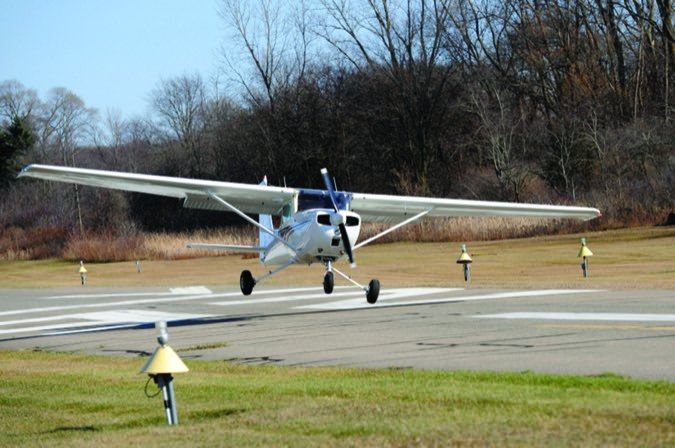
In water, small waves and micro currents affect smaller boats much more than a large, heavy gear boats. This same effect is true with wind and aircraft. Small, light planes, like Piper Cubs, Cessna 150s and various light sport aircraft can be a real handful in windy conditions and are tossed about by turbulence and wind shear much more readily than heavier aircraft like King Airs and Caravans.
On the bright side, just as kayaks and small boats are more maneuverable, lighter aircraft tend to be easier to fly and more responsive to control inputs. So when gusts or downdrafts get you into trouble, a quick addition of power will often allow a go-around.
Wet Wind
In my early twenties, I was a hydrodynamic fluid flow specialist—I guided or was a River Ranger on whitewater stretches on a handful of rivers in Colorado. I was a specialist running Class III through V whitewater and made a living off my ability to “read water.”
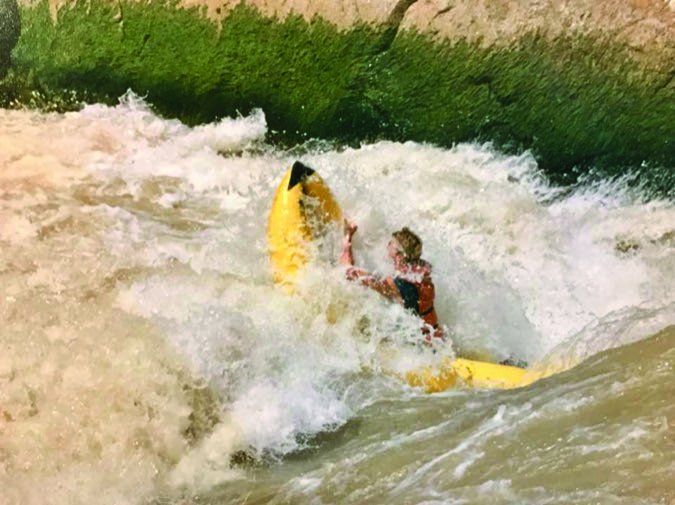
Reading water is a term of art used by whitewater boaters that reflects understanding of the way water flows down a rapid and how the resulting hydraulic features will affect the boat. Reading water is critical to both safety and earning tip money. You can maximize the fun (hitting whoopie-water for the tourist) but you also need to avoid the perils of the more dangerous parts of the river like particularly powerful features like the reversing “hole” at Skull Rapid and asymmetric lateral waves that appear below Funnel Falls at some water levels.
Reading whitewater rapids is relatively easy, because you can see the features like tongues, reversals, eddies, standing waves, breaking waves and lateral waves. You can also ask other boaters how a particular feature is behaving based on changing water levels. Experience eventually teaches you how each feature will affect your craft.
Dealing with wind is similar, in that your skills increase with experience, but reading the wind requires a bit more imagination.
WINDY.COM
This online tool is an excellent way to visualize wind. It can be used around the world for weather information and forecasting but also allows zooming in to examine localized wind information. For pilots, it provides wind direction and strength, including predictions at different altitudes.
